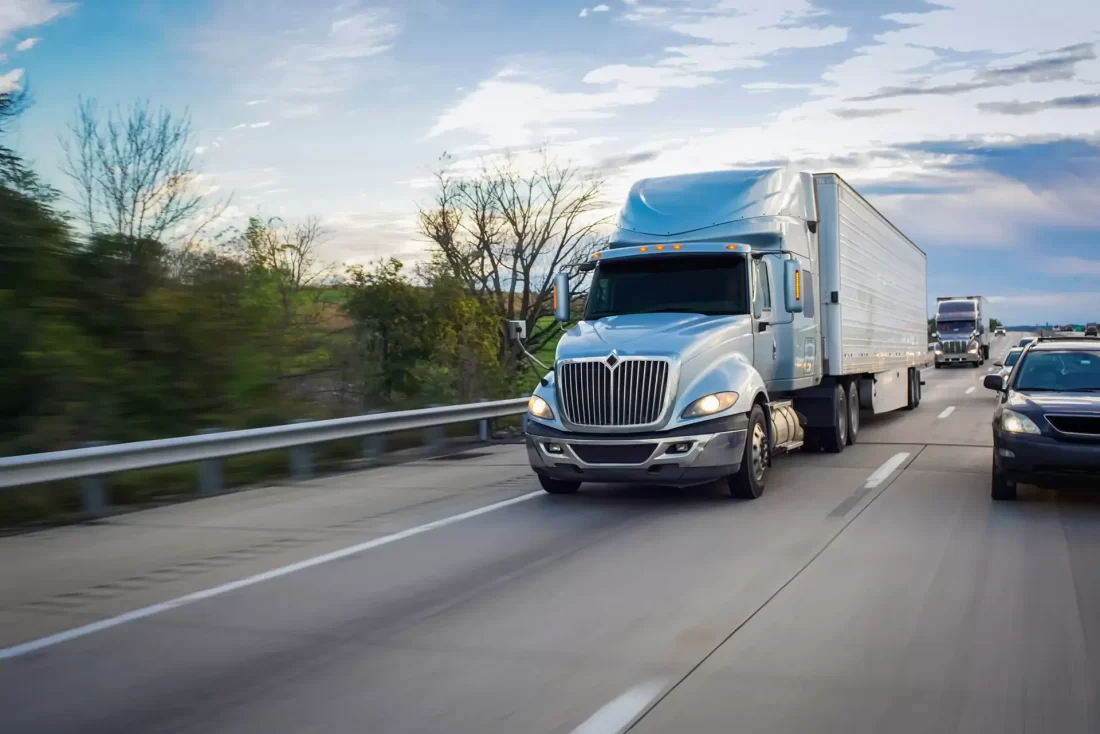Staying safe on the highway with commercial trucks requires heightened awareness and understanding of how these large vehicles operate. Given their size and weight, trucks have unique limitations in speed, maneuverability, and visibility that can affect the safety of surrounding drivers. With a few essential precautions, drivers can minimize the risk of accidents and make highway travel safer for everyone.

Keep a Safe Distance
One of the most crucial tips for staying safe around commercial trucks is maintaining a safe distance. Trucks require much longer distances to stop compared to regular vehicles. Avoid tailgating trucks, as following too closely could result in a collision if the truck suddenly brakes. Additionally, staying back ensures that you’re out of the truck’s “no-zone” blind spots, which are significant. A good rule is to keep at least a four-second following distance behind a truck; this gives you ample time to react if needed.
Avoid Blind Spots
Chicago truck accident attorneys note that commercial trucks have large blind spots, especially directly behind, along the sides, and right in front of the vehicle. These areas, often called “no-zones,” are places where the truck driver may not see other vehicles. If you cannot see the truck driver’s mirrors, they likely cannot see you. When passing a truck, do so quickly and avoid lingering in their blind spots. Always pass on the left side, where the driver has a slightly better view.
Use Signals and Communicate Clearly
Clear communication is key to safe driving, especially near trucks. Signal early when merging, changing lanes, or exiting the highway to give truck drivers enough time to adjust. Trucks cannot maneuver as quickly as smaller vehicles, so sudden moves by cars in close proximity can be hazardous. Use your turn signals well in advance and avoid abrupt lane changes near a truck.
Pass with Caution
When passing a commercial truck, it’s essential to do so safely and confidently. Accelerate slightly to pass without lingering in their blind spots, and always pass on the left. Avoid cutting in front of the truck too closely after passing; large vehicles need substantial space to brake safely, so ensure there is enough room before merging back into the lane. This helps prevent situations where the truck has to brake abruptly to avoid a collision.
Be Mindful of Wide Turns
Trucks need extra space to make turns, especially right turns, where they may swing out slightly left before turning right. Never try to squeeze between a turning truck and the curb or attempt to pass on the inside. Give trucks plenty of space when they’re making turns to avoid accidents.
Adjust for Weather Conditions
Trucks handle differently in adverse weather, just as other vehicles do. Rain, snow, and fog can increase stopping distances for all vehicles, but for trucks, the impact is even more significant. Give trucks extra room in these conditions, and slow down if visibility or traction is poor. Avoid sudden braking or maneuvers near trucks in inclement weather, as these can lead to dangerous situations.
Stay Focused and Avoid Distractions
Distracted driving is always dangerous, but it becomes even riskier when driving near large trucks. Keep your focus on the road and avoid activities that divert your attention, such as texting, eating, or using electronic devices. Remaining alert and aware of the trucks around you can help you react quickly if an unexpected situation arises.
By keeping a safe distance, staying out of blind spots, signaling intentions clearly, and passing with caution, drivers can enhance their safety when sharing the highway with commercial trucks. These practices, along with adjusting to road and weather conditions and staying alert, significantly reduce the likelihood of accidents. Respecting the unique needs of large vehicles and driving defensively ensures a safer highway experience for everyone.



